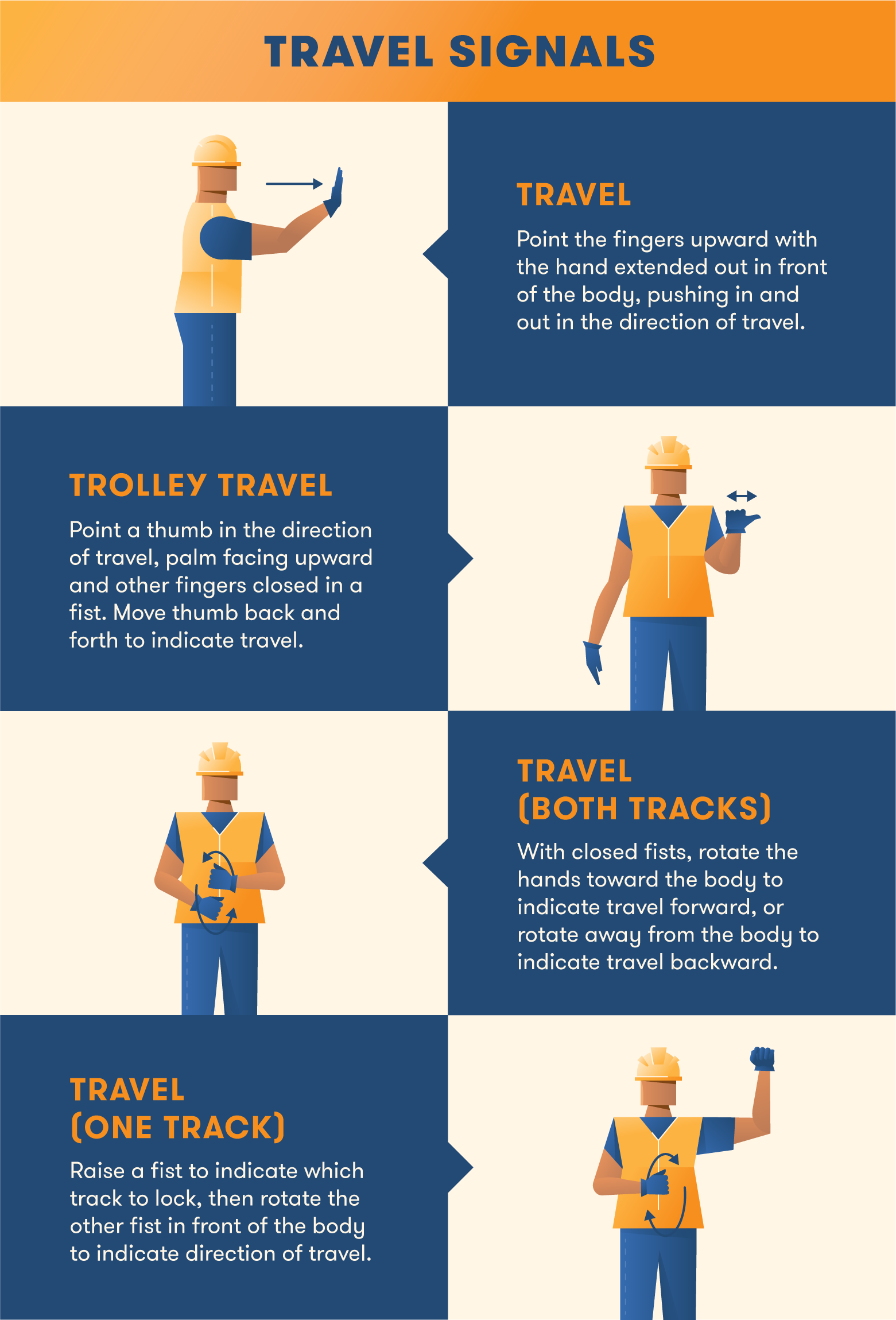When managing a construction site, safety reigns supreme. Ensuring everyone’s well-being hinges on clear communication and a shared understanding of potential hazards. This is where signs and signals take center stage, acting as the silent guardians of the construction zone, guiding workers, visitors, and the surrounding community towards a safer, more efficient, and transparent construction process.
Signs and Signals for Building Sites: The Language of Safety and Efficiency
Construction sites are dynamic environments teeming with activity, from heavy machinery to bustling workers. In such settings, clear communication is non-negotiable. Signs and signals serve as the universal language, transcending verbal barriers and ensuring everyone on site receives crucial information instantly.
The Power of Visual Cues: Preventing Accidents Before They Happen
Imagine approaching a construction site. What’s the first thing that catches your eye? A bright orange sign boldly declaring “Danger: Construction Area – Authorized Personnel Only” immediately registers a clear message: proceed with caution. This is the power of well-placed signage – it communicates potential hazards, enforces restricted access, and prevents accidents before they even have a chance to occur.
But safety isn’t their only forte. Signs and signals play a pivotal role in guiding everyone on site. Clear directional signs, strategically positioned, act as a roadmap, leading workers and deliveries to the right locations. This simple measure prevents confusion, optimizes efficiency, and ensures a smoother workflow.
Upholding Safety Standards: A Shared Responsibility
Construction sites are governed by stringent safety regulations, such as those outlined by OSHA and ANSI. These regulations serve as the blueprint for maintaining a safe working environment, and signs and signals are instrumental in their implementation.
Hazard warnings, for instance, are not merely for dramatic effect. A bright yellow sign bearing a skull and crossbones instantly grabs attention, conveying the presence of hazardous materials like asbestos. Such visual cues remind workers to don their protective gear, safeguarding themselves and others from potential harm.
Fostering Community Harmony: Transparency Beyond the Fence Line
Construction projects impact not just those working within the site’s perimeter but also the surrounding community. Signs serve as crucial communication tools, fostering transparency and building trust with neighbors.
Visualizations of the finished project, displayed on large signs, offer a glimpse into the future, turning a potentially disruptive endeavor into a source of community pride. And when road closures or detours become inevitable, clear, strategically placed signs minimize frustration and maintain traffic flow.
By embracing transparency and proactively communicating potential inconveniences, construction companies demonstrate respect for the community they’re building in, fostering positive relationships that extend beyond the project’s timeframe.
Every Sign Tells a Story: Building a Culture of Safety
In the world of construction, signs and signals are more than just pieces of metal or plastic – they’re tangible representations of a commitment to safety, efficiency, and transparency. They protect everyone from seasoned professionals to curious onlookers. So, the next time you encounter a sign on a construction site, take a moment to appreciate its message. It might be the very thing that prevents an accident or makes someone’s day a little bit safer.
What Are The Different Types of Construction Site Signs?
Construction sites are like well-choreographed ballets of heavy machinery, skilled workers, and potential hazards. To ensure this intricate dance goes off without a hitch, clear communication is key. Enter construction site signs – the silent heroes working tirelessly to keep everyone informed and safe. Let’s dive into the different types of signs that play a crucial role in maintaining order and safety on a construction site:
1. Informational Signs: Your Site Guide
Just like friendly tour guides, informational signs provide the lowdown on essential site details. They convey important information such as safety rules, Personal Protective Equipment (PPE) requirements (hard hat zone anyone?), and emergency procedures. Think of them as your go-to source for staying in the know on the construction site.
2. Warning Signs: Proceed with Caution
Warning signs are the bright yellow attention-grabbers that demand your attention. They scream, “Hey, watch out!” and alert you to potential hazards. Whether it’s falling objects, high-voltage areas, or the presence of hazardous materials, these signs are there to keep you on your toes and remind you to prioritize safety.
3. Directional Signs: Finding Your Way
Navigating a construction site can feel like navigating a maze, but directional signs are here to help. These signs act as the site’s internal compass, guiding workers, visitors, and deliveries to their desired locations. They ensure smooth traffic flow and prevent any wrong turns along the way.
4. Safety Signs: The Rulebook
Safety signs are the backbone of a secure construction site. They cover a wide range of crucial information, ensuring everyone is up to speed on safety protocols. Let’s break down this essential category further:
- Prohibitory Signs: The “No-Nos”: These signs draw a clear line in the sand, indicating actions that are strictly forbidden. From “No Smoking” to “No Entry,” prohibitory signs are non-negotiable rules for maintaining a safe working environment.
- Mandatory Signs: Gear Up!: These signs leave no room for interpretation. They spell out specific actions that must be taken to ensure safety. Think “Wear Safety Goggles” or “Use Handrails.” Mandatory signs are your constant reminder to prioritize safety precautions.
- Emergency Escape/First Aid Signs: Your Lifeline: When emergencies strike, these signs become your guiding light. They clearly mark evacuation routes and first aid locations, ensuring a swift and organized response in critical situations.
- Firefighting Signs: Ready for Action: These signs are dedicated to fire safety. They pinpoint the locations of fire extinguishers, outline evacuation procedures, and provide essential information on firefighting equipment.
Placement is Key: Making Sure Signs Speak Volumes
A sign hidden behind a pile of construction materials is about as useful as a whisper in a hurricane. The effectiveness of a sign hinges on its visibility.
- Strategic Placement: Position signs in well-lit, high-traffic areas where they are easily seen. The goal is to make them impossible to miss.
- Clear and Concise Messaging: Construction workers are busy people. They don’t have time to decipher lengthy paragraphs on a sign. Keep the message short, to the point, and easy to understand, utilizing clear symbols whenever possible.
The Bottom Line
Construction site signs might seem like simple pieces of metal or plastic, but they play a vital role in creating a safe and efficient work environment. By understanding the different types of signs and ensuring their proper use and placement, we contribute to a construction industry where everyone can go home safe at the end of the day.
How Do I Choose The Right Signs For My Building Site Address?
A clearly marked building site address is more than just a formality; it’s essential for safety, efficiency, and ensuring everyone knows exactly where your project is located. Choosing the right signs for your building site address involves careful consideration of several factors to ensure your message is clear, visible, and impactful.
1. Define Your Sign’s Purpose: What Story Does it Need to Tell?
Before diving into the world of sign design, take a step back and determine the specific information you need to convey. Are you simply displaying the address, or do you need to guide deliveries, direct visitors, or warn about potential hazards?
Here’s a quick breakdown to get you started:
| Type of Sign | Purpose | Example |
|---|---|---|
| Address Sign | Clearly displays the building site’s address. | 123 Construction Lane |
| Directional Sign | Guides people to specific locations within the site. | Delivery Entrance, Site Office, Parking |
| Warning Sign | Alerts people to potential dangers or hazards on the site. | Construction Zone – Authorized Personnel Only |
| Informational Sign | Provides additional details or instructions relevant to the site. | Hard Hat Area, No Smoking, Emergency Exit |
2. Size Matters: Think Visibility from a Distance
Imagine a delivery truck driver squinting to read your address sign from afar. Not ideal, right? The size of your sign should be proportionate to its environment and purpose. A small, subtle sign might suffice for a residential project, but a busy construction site demands a bold statement that’s visible from a distance.
3. Color is Key: Stand Out, Be Seen
Contrast is your best friend when it comes to sign visibility. Choose colors that pop against their surroundings, whether it’s a bustling cityscape or a serene rural landscape. Bright, eye-catching colors like yellow, orange, or fluorescent green are commonly used for safety signs because they command attention. Don’t be afraid to be bold with your color choices – it’s about making sure your message is seen and acknowledged.
4. Keep it Simple: Clear and Concise Wording Wins
Avoid technical jargon, complex abbreviations, or industry-specific terms that might confuse the average person. Your goal is clear communication, and that starts with using large, easy-to-read fonts and concise wording. For example, instead of “Construction Site Access Point,” consider a more straightforward “Site Entrance.”
5. Location, Location, Location: Strategic Placement is Everything
Where you place your signs is as important as what they say. Consider visibility from various approaches to your site. Place address signs near entrances and exits for easy identification. Directional signs should be strategically located throughout the site to guide people effectively. Avoid hiding signs behind obstacles or clutter; make them stand out!
Bonus Tip: Don’t Forget About the Law!
Building codes and local regulations often have specific requirements for signage, particularly regarding safety standards. It’s crucial to check with your local authorities to ensure your signs comply with all applicable regulations.
Choosing the right signs might seem like a minor detail in the grand scheme of a construction project, but it can make a world of difference in terms of safety, efficiency, and overall professionalism. By putting careful thought into your signage strategy, you’re investing in a smoother, safer, and more successful construction process.
Ensuring OSHA Compliance: A Guide to Construction Site Signage Regulations
Safety on a construction site extends beyond hard hats and steel-toe boots; it encompasses clear communication and a shared understanding of potential hazards. This is where OSHA’s signage regulations come into play, acting as a standardized language of safety, guiding workers and visitors alike.
Key Takeaways for OSHA Compliance:
- Not Just Suggestions, But Mandates: OSHA’s signage regulations are not mere guidelines; they are legally enforceable standards designed to protect workers and prevent accidents.
- Signs as Lifesavers: Construction site signs are not decorations; they convey critical information about potential hazards, safety procedures, and emergency protocols.
- Mandatory Posters Matter: Those safety posters you see on construction sites? They aren’t optional wallpaper. Employers are required to display them prominently for all workers to see.
- Non-Compliance Comes at a Cost: Ignoring OSHA’s signage regulations can result in hefty fines and, more importantly, put workers’ lives at risk.
- Regular Maintenance is Key: Just like tools, signs need regular check-ups. Regular inspections and maintenance ensure they remain legible, visible, and effective in conveying crucial safety information.
OSHA’s Comprehensive Approach to Signage
OSHA’s signage regulations cover a wide range of scenarios to ensure a safe working environment. Some key areas include:
- Hazard Warnings: Think bright, eye-catching signs with clear messages like “Watch out for falling objects!” or “Danger: High Voltage!” These signs act as an early warning system, alerting workers to potential dangers.
- Directional Guidance: Directional signs are like a roadmap for the construction site, guiding workers and visitors with clear directions for evacuation routes, project boundaries, and other key locations.
- Fire Safety Notices: In the event of a fire, every second counts. Fire safety signs provide crucial information on fire extinguisher locations, evacuation procedures, and other essential fire safety protocols.
- Site Project Information: These signs act as a central hub of information, displaying important details such as the project name, contact information for those in charge, and essential safety protocols specific to the site.
Meeting OSHA and ANSI Standards:
To meet OSHA and ANSI’s stringent requirements, construction site signs must adhere to specific guidelines:
- Legibility and Visibility: Signs should be large enough to be easily read from a distance, with bold lettering and contrasting colors for maximum visibility.
- Standardized Symbols and Colors: Just like a stop sign is universally recognized, construction sites use standardized symbols and colors to convey specific messages instantly. Familiarizing yourself with these standards is crucial for effective communication.
- Strategic Placement: A sign hidden behind a stack of lumber defeats its purpose. Signs must be strategically placed in high-traffic areas, free from obstructions, to ensure maximum visibility and impact.
- Well-Maintained: Faded, torn, or dirty signs send the message that safety is not a priority. Regular cleaning and maintenance are essential to keep signs in top condition, conveying professionalism and a commitment to worker well-being.
Embracing a Culture of Safety:
By adhering to OSHA’s signage regulations, construction companies demonstrate a genuine commitment to worker safety. Effective signage is not just about compliance; it’s about fostering a work environment where safety is paramount. When everyone on site is informed and aware of potential hazards, accidents can be prevented, and lives can be saved.
Citation:
Additional Insights for Enhanced Safety and Efficiency:
- Integrating Technology: Explore the possibilities of integrating IoT sensors into construction signs to enable real-time monitoring of environmental conditions, worker safety, and equipment status.
- Augmented Reality: Investigate the use of augmented reality (AR) technology to enhance sign visibility and provide interactive content, such as safety training modules, hazard simulations, or real-time data overlays.
- Sustainable Materials: Embrace environmentally friendly practices by utilizing sustainable signage materials, such as biodegradable or recycled options, to reduce the environmental impact of construction projects.
By staying informed about the latest advancements in construction site safety and continuously seeking ways to improve communication and risk mitigation strategies, we contribute to a safer, more efficient, and sustainable construction industry.
internal links:
- Explore a comprehensive list of materials used in various construction projects at construction list of materials.
- Stay informed about the vital signs and signals essential for building sites to ensure safety and efficiency. signs signals for building sites phone
- Delve into the intricacies of binding wire in Indonesia and discover its unique properties and applications by clicking binding wire about indonesia
- White Tile Backsplash Kitchen: A Classic and Clean Design - November 17, 2025
- Backsplash For White Cabinets: Choosing The Right Kitchen Style - November 16, 2025
- White Kitchen Backsplash Ideas For a Timeless, Stylish Update - November 15, 2025










